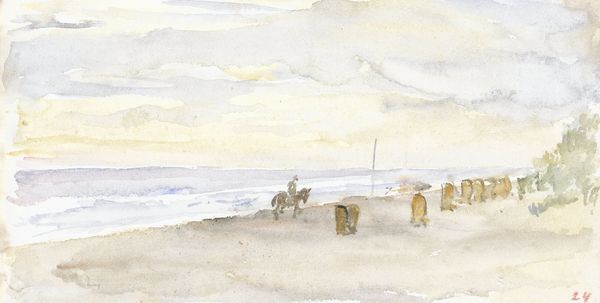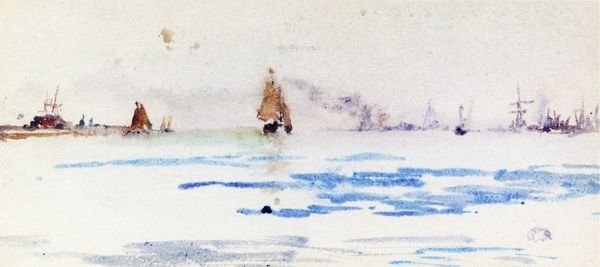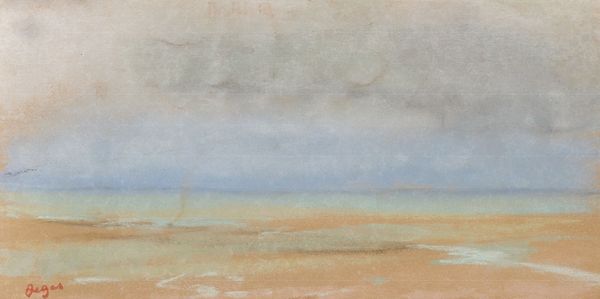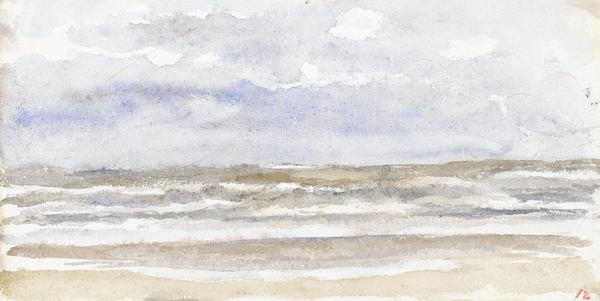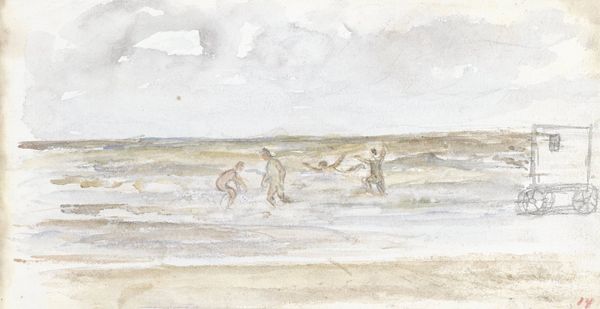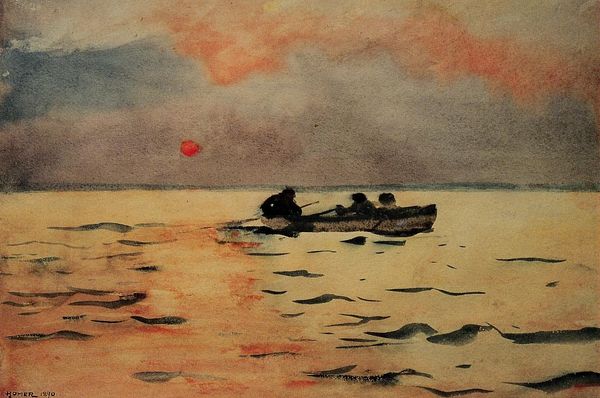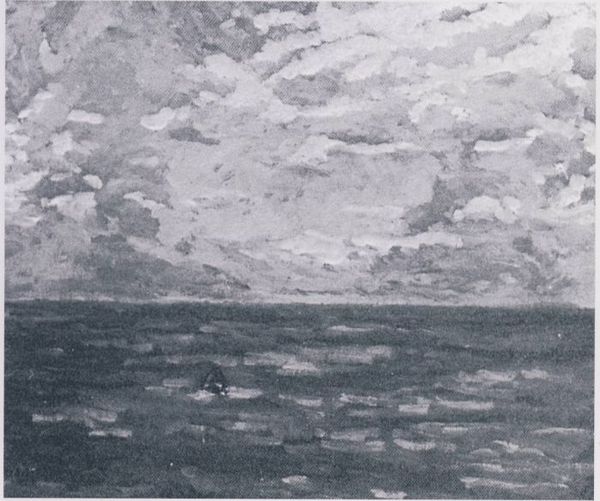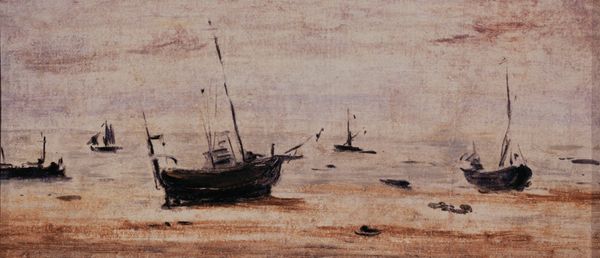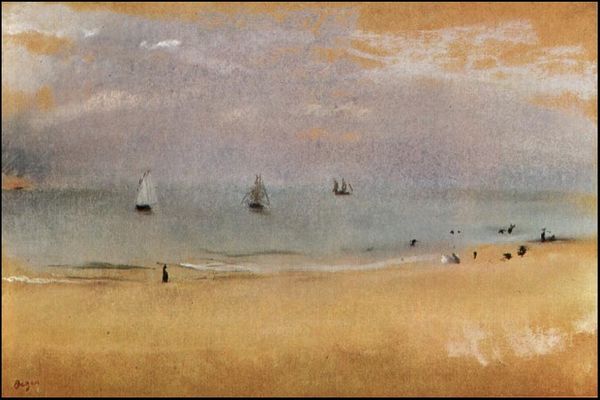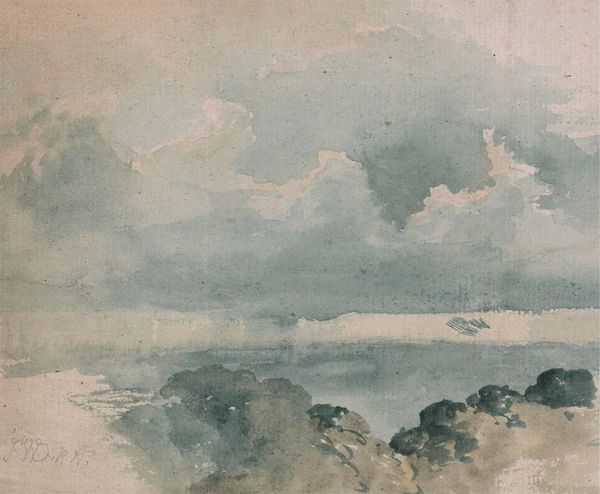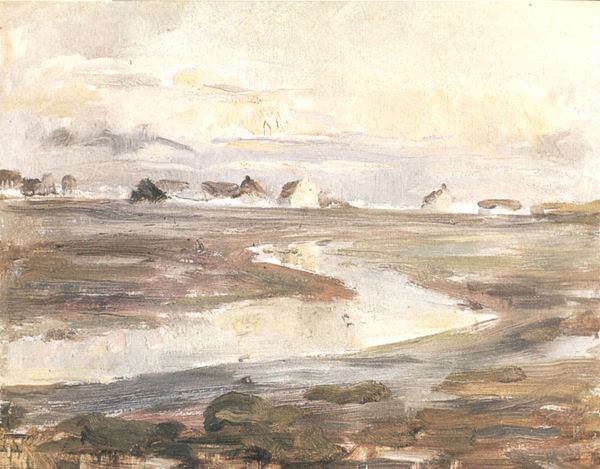
painting, photography, watercolor
#
boat
#
water colours
#
ship
#
painting
#
impressionism
#
landscape
#
photography
#
watercolor
#
water
#
watercolor
#
sea
Dimensions: 12.7 x 21.59 cm
Copyright: Public domain
Editor: This is James McNeill Whistler’s “Grey Note - Mouth of the Thames,” created in 1885 using watercolor. It feels incredibly muted and calm, almost melancholic. The horizon line is so subtle, barely there, really. What strikes you when you look at this work? Curator: Funny you say that. When I look at it, I feel an almost ethereal quality, a sense of boundless space dissolving into atmosphere. I’m transported. It reminds me of the Thames’ role as a doorway to the world. The indistinct shapes suggest rather than define; ships are ghosts, water blends with sky, existence reduced to its simplest elements. Is it reality or just a fleeting dream? Editor: A dream! I like that. But why 'grey'? It’s not all grey. I notice the yellowish and brown tints, which make me think of industrial pollution, something ugly. Curator: It’s tempting to see the tones as a literal reflection of industrialization, and maybe there’s an element of that, but I think Whistler’s intention might have been different. Consider the "nocturnes"—he often used color to evoke a specific mood or musical quality. “Grey Note” suggests a subdued, harmonious resonance, more feeling than statement. Don’t you think? Editor: Hmmm, a muted harmony. Okay, I can appreciate that. It's almost as if the river and sky are whispering to each other, just out of earshot. Curator: Precisely! The “grey” then isn't just a color but a feeling, a quiet contemplation on the river's enduring presence, it's like looking into a mirror of your own memories. It’s a nice painting to daydream to. Editor: I see it differently now. Thank you for illuminating Whistler's choice of color. Curator: And thank you for helping me see it with new eyes, too. That is the beauty of it, isn't it?
Comments
No comments
Be the first to comment and join the conversation on the ultimate creative platform.
